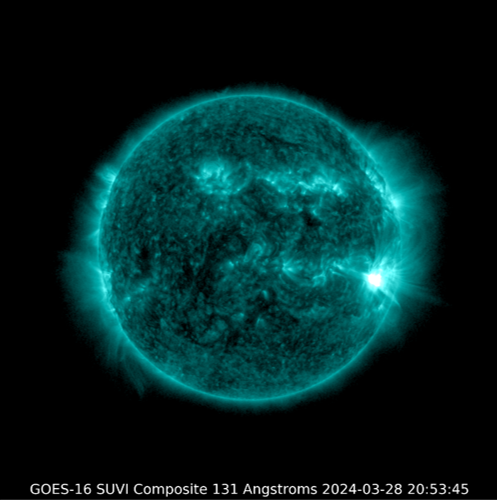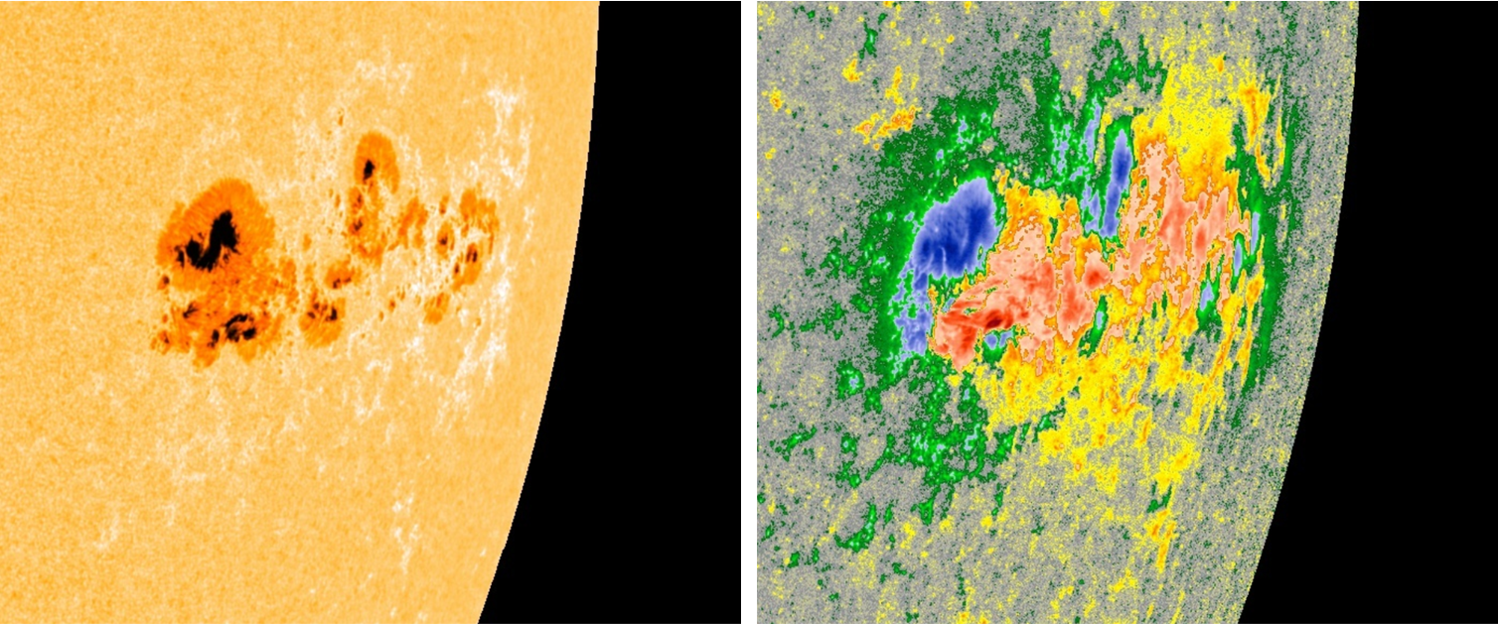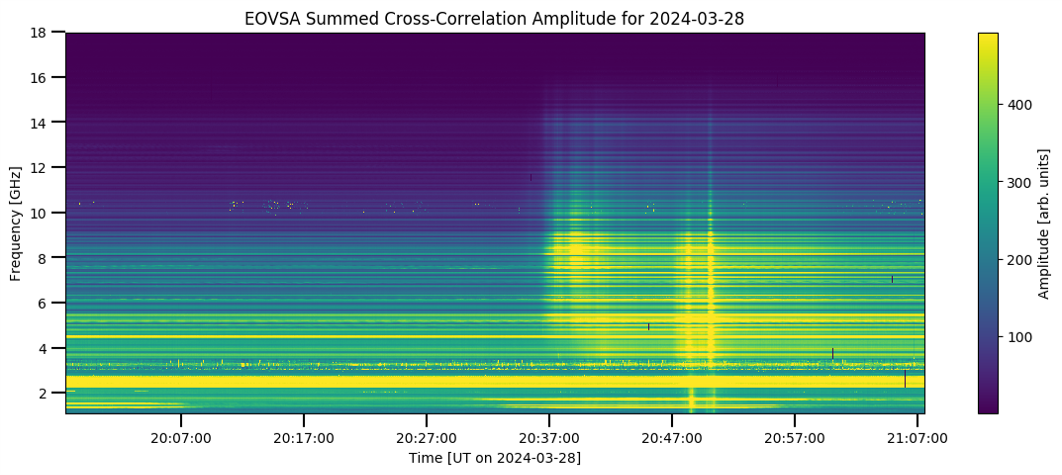UPDATES are added at the end of this newsflash. Please scroll down.
After more than 2 dozen of M-class flares, NOAA 3615 finally produced its first X-class flare. The X1.1 event peaked at 20:56UTC on 28 March. Its source was over the trailing portion of this large sunspot group, as can be seen in this extreme ultraviolet image (GOES/SUVI 131). This location corresponds to a huge delta magnetic structure (see the STCE SWx classification page for more information) as can be deduced from the white light and magnetogram imagery taken by SDO/HMI just minutes before the start of the event.


SUVI EUV imagery in other wavelengths and Solar Demon analysis (SIDC) of the currently available imagery do not seem to indicate any coronal dimming or coronal waves. Also, radio observations by the Owens Valley Solar Array (EOVSA) recorded only Type III radio bursts from this event, see the radio spectrogram underneath. No presence so far of a Type II radio burst, which would otherwise have been a telltale sign that the eruption was associated with a coronal mass ejection (CME). The current proton flux (GOES) at various energies has remained at background levels so far.

This X-class event most likely disturbed High Frequency (HF) communications over the western portion of the USA, Mexico, Central America, and the Pacific Ocean (D-RAP). An advisory for disturbed HF Com has been sent to the civil aviation by PECASUS. No other space weather impacts have been observed, but this may change as more data and imagery become available. Further strong flaring from NOAA 3615 can be expected as long as the potent magnetic delta structure remains present.

UPDATE: A slow CME was associated with the X1 flare and first observed in SOHO/LASCO C2 imagery at 21:24UTC. SIDC forecasters have determined its width is too small to have an earth-directed component. This can be seen in the combo image underneath showing the flaring region in EUV and the CME (difference image: one image subtracted from the next). Also the proton flux remained near background levels.
